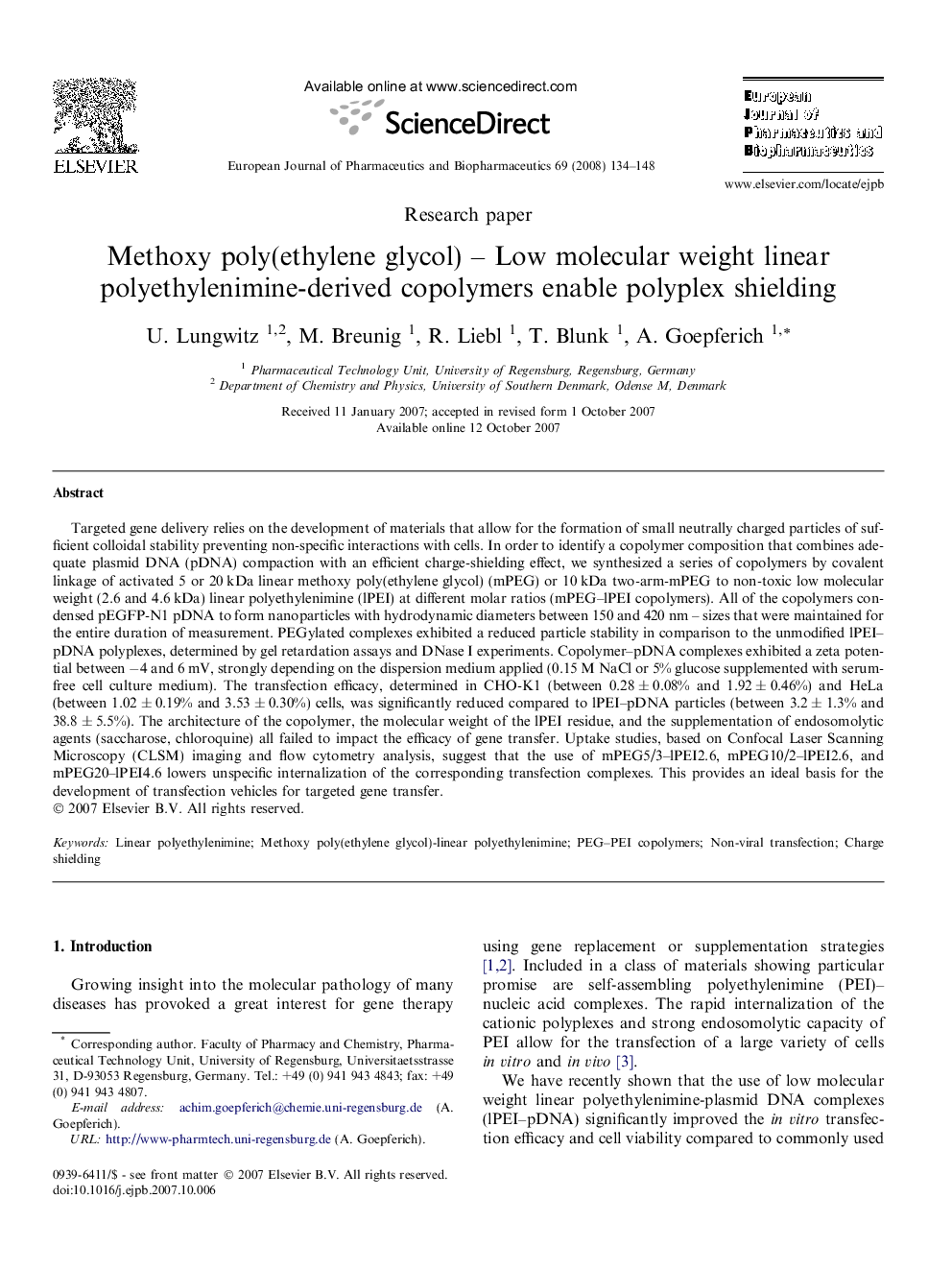| کد مقاله | کد نشریه | سال انتشار | مقاله انگلیسی | نسخه تمام متن |
|---|---|---|---|---|
| 2084780 | 1545397 | 2008 | 15 صفحه PDF | دانلود رایگان |

Targeted gene delivery relies on the development of materials that allow for the formation of small neutrally charged particles of sufficient colloidal stability preventing non-specific interactions with cells. In order to identify a copolymer composition that combines adequate plasmid DNA (pDNA) compaction with an efficient charge-shielding effect, we synthesized a series of copolymers by covalent linkage of activated 5 or 20 kDa linear methoxy poly(ethylene glycol) (mPEG) or 10 kDa two-arm-mPEG to non-toxic low molecular weight (2.6 and 4.6 kDa) linear polyethylenimine (lPEI) at different molar ratios (mPEG–lPEI copolymers). All of the copolymers condensed pEGFP-N1 pDNA to form nanoparticles with hydrodynamic diameters between 150 and 420 nm – sizes that were maintained for the entire duration of measurement. PEGylated complexes exhibited a reduced particle stability in comparison to the unmodified lPEI–pDNA polyplexes, determined by gel retardation assays and DNase I experiments. Copolymer–pDNA complexes exhibited a zeta potential between −4 and 6 mV, strongly depending on the dispersion medium applied (0.15 M NaCl or 5% glucose supplemented with serum-free cell culture medium). The transfection efficacy, determined in CHO-K1 (between 0.28 ± 0.08% and 1.92 ± 0.46%) and HeLa (between 1.02 ± 0.19% and 3.53 ± 0.30%) cells, was significantly reduced compared to lPEI–pDNA particles (between 3.2 ± 1.3% and 38.8 ± 5.5%). The architecture of the copolymer, the molecular weight of the lPEI residue, and the supplementation of endosomolytic agents (saccharose, chloroquine) all failed to impact the efficacy of gene transfer. Uptake studies, based on Confocal Laser Scanning Microscopy (CLSM) imaging and flow cytometry analysis, suggest that the use of mPEG5/3–lPEI2.6, mPEG10/2–lPEI2.6, and mPEG20–lPEI4.6 lowers unspecific internalization of the corresponding transfection complexes. This provides an ideal basis for the development of transfection vehicles for targeted gene transfer.
Journal: European Journal of Pharmaceutics and Biopharmaceutics - Volume 69, Issue 1, May 2008, Pages 134–148